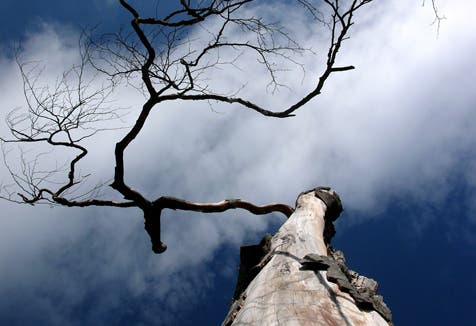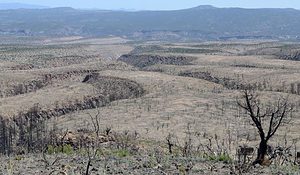Around the globe, local climates are changing. Maybe you haven’t noticed it yet, because in most regions this is a slow and subtle change, but the people that are used to observing the nature around their cities, or the people in agriculture that are deeply connected to the patterns of rain and drought will tell you – the last decade has seen some really rough seasons. This doesn’t always mean drought of course, in some regions in fact it means more or too much rain or even unusual, heavy storms.

Although all this may seem chaotic and impossible to predict, at least one pattern seems to emerge. In many regions, certain climate states that used to be unusual seem to settle in certain places where they have become the norm for a few years in a row or more rarely, even for the last decade.
In the places where drought becomes the rule and not the exception, its effects can now be now seen not only in the plains of the world, where we are used to observe them, but also in the mountains and more generally, in the places where almighty forests seem to be ever lasting – at least from the point of view of drought.
A new study published in this week’s issue of nature shows how a staggering number of trees from around the world, even those in some rainforests, are living at the edge of their normal living parameters so to speak. As the authors of the paper put it, “one primary cause of productivity loss and plant mortality during drought is hydraulic failure.”
In trees, as in humans, the circulatory system is a vital one. However, a plant’s “heart” functions in a very different way. Plants carry their nutrients from the roots up to the leaves, by creating a pressure difference: a low fluid pressure is created in the leaves that eventually drags the water from down below. And if you think about it, a place where this system is spectacular and caries water over a considerable distance is in a tree.
During a drought, as the soil dries out and and there is little to no water to extract from it, the circulatory system of a plant is put under stress. Due to the increasing low pressure in the leaves, the xylem vessels in the plant break at some point and absorb air, forming blockages. This is called – again as in humans – air embolism, and if the drought persists, more and more vessels become blocked until the plant dries and dies.

The effects of air embolism can be seen in most trees affected by drought, however, different species react in different ways, thus being very difficult to predict how different forests, in various regions of the world will react.
Dr. Brendan Choat from the University of Western Sydney, and Dr Steven Jansen from Ulm University in Germany assembled a global team of 24 plant specialists to look into this matter. And their findings are not very encouraging: “We show that 70% of 226 forest species from 81 sites worldwide operate with narrow hydraulic safety margins against injurious levels of drought stress and therefore potentially face long-term reductions in productivity and survival if temperature and aridity increase as predicted for many regions across the globe.”
Dr Choat says: “While plants vary greatly in their embolism resistance, we found their vulnerability to drought is the same across all forest types”.
“These findings provide insight into why drought-induced forest decline is occurring not only in arid regions but also in wet forests not normally considered at drought risk”.

Another fact pointed out by the study’s lead-author, Dr. Choat, is that changing forests will in no way mean forests will disappear: “a forest may respond to climate change in a number of ways. For instance, some species may be able to evolve quickly enough to keep pace with a changing climate in one location, while others may spread into new locations, tracking their preferred conditions.”
“Survival is largely dependent on species having enough time to respond to changes in the environment. The new dataset will be useful to better predict the balance between a declining or a healthy forest. It will also provide a better understanding of which species are likely to persist and which are likely to suffer and potentially disappear”.
That being said, having a forest in your backyard that for a few years or perhaps a decade becomes dry and unrecognizable, and that, after another few decades, becomes gradually repopulated by different, more drought resistant species, is still what you might call a big change.
[Via Nature]






